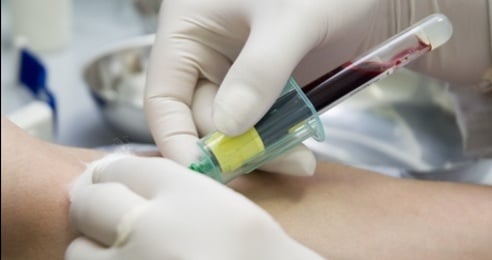The $69 Billion-Dollar Market for In Vitro Diagnostics
In vitro diagnostic testing costs little to the healthcare system and contributes much to clinical practice, which is part of the reason there is so much interest in the industry. It is a $69.2 billion-dollar market, with lots of players. A dozen large multi-test category players compete, hundreds of other concerns that may produce a test or group of tests, or supply a reagent or manufacture on an OEM basis. Not only are there a lot of competitors, but there is a lot of investment: A session at the 2019 American Association of Clinical Chemistry estimated the past year’s investment in IVD businesses at $3 billion dollars. There are challenges in the market too, including lab consolidation and government reimbursement reductions, which is why companies often have to partner and combine to survive. There were more than 50 significant M&A deals in the industry, as existing IVD concerns seek to acquire new tech.
Kalorama’s report, The Worldwide Market for In Vitro Diagnostics Tests is a comprehensive global report designed to track those activities. The report finds that IVD testing is driven by disease incidence, aging population, new technologies, new entrants, and demand from consumers and providers for better care. Tissue-based testing for cancer and molecular tests for both cancer and infectious diseases are the growth engine; growing at rate 50% higher than the overall market. Concern over sepsis and respiratory conditions should ensure that infectious disease will remain in the fast-growth categories. Early detection and linking of therapy to patient should drive cancer diagnostics.
Specialty immunoassays, continuous glucose tests, mass spectrometry and inherited diseases are other large and high-growth segments.
Developed markets still make up the bulk of revenue in IVD (N.America, Europe, Japan are 72% of market), but vendors compete globally and seek out emerging markets to thrive. Key nations are China, India, Korea, Turkey, and Brazil, but IVD vendors are finding new emergent nations. These nations are not new markets for established IVD vendors, most have had offices or distribution in these countries for decades. But the role these nations play in market growth has become more prominent.
There are new technologies in the market. It was once uncommon to see mass spectrometry’s use in clinical decisions. Now it has arrived, enough that it is a category in the market, especially in developed markets. A particular use is for the identification of bacteria, fungi, and mycobacteria. The MALDI-TOF market has exploded in recent years in microbiology labs thanks largely to the IVD regulatory approval of the VITEK MS and MALDI Biotyper. Histopathology is a new area of interest. Throughput and operational complexity are limits despite this fast growth in usage.
Companion testing is the segment with the most buzz and attention, due to its role in bringing about precision treatment and personalized care. Kalorama reports these tests in the molecular and histology segments of its report. FoundationOne CDx’s approval as the first FDA approved companion diagnostic test for solid tumors is a positive signal to companies developing companion diagnostics for oncology indications. Companion testing has expanded since the commercial success of Herceptin (trastuzumab) and Gleevec (imatinib), both of which required testing with companion diagnostics before they could be prescribed.
In the more mature segments, there is no lack of activity: Major core lab vendors such as Siemens, Roche, OrthoClinical and Abbott Diagnostics are developing improved models selling their existing on staying with them. They do preserve and expand revenue, as well as create barrier entry against other vendors in a shrinking lab environment. Footprint improvements, IT enhancements, EMR, automation, and expanded menus are part of this change. While this is not part of traditional IVD commercialization, web-based and TV marketing has helped in a few categories and usage of such mechanisms would boost this category. Analytes that would normally be found only on dedicated immunoanalyzers, have migrated to consolidated workstations including: vitamin D, HbA1c, NGAL, D-dimer, anti-CCP, hsTroponin, hsCRP, cystatin, procalcitonin, HE4 cancer marker and markers for Graves’ disease.
Blood screening markets are boosted by better global collection of blood and the globalization of tropical diseases, which need to be detected.
Kalorama Information’s report captures all these trends, makes forecasts and estimates sizes for scores of test categories. The report can be found here: https://kaloramainformation.com/product/the-world-market-for-in-vitro-diagnostic-tests-12th-edition/




